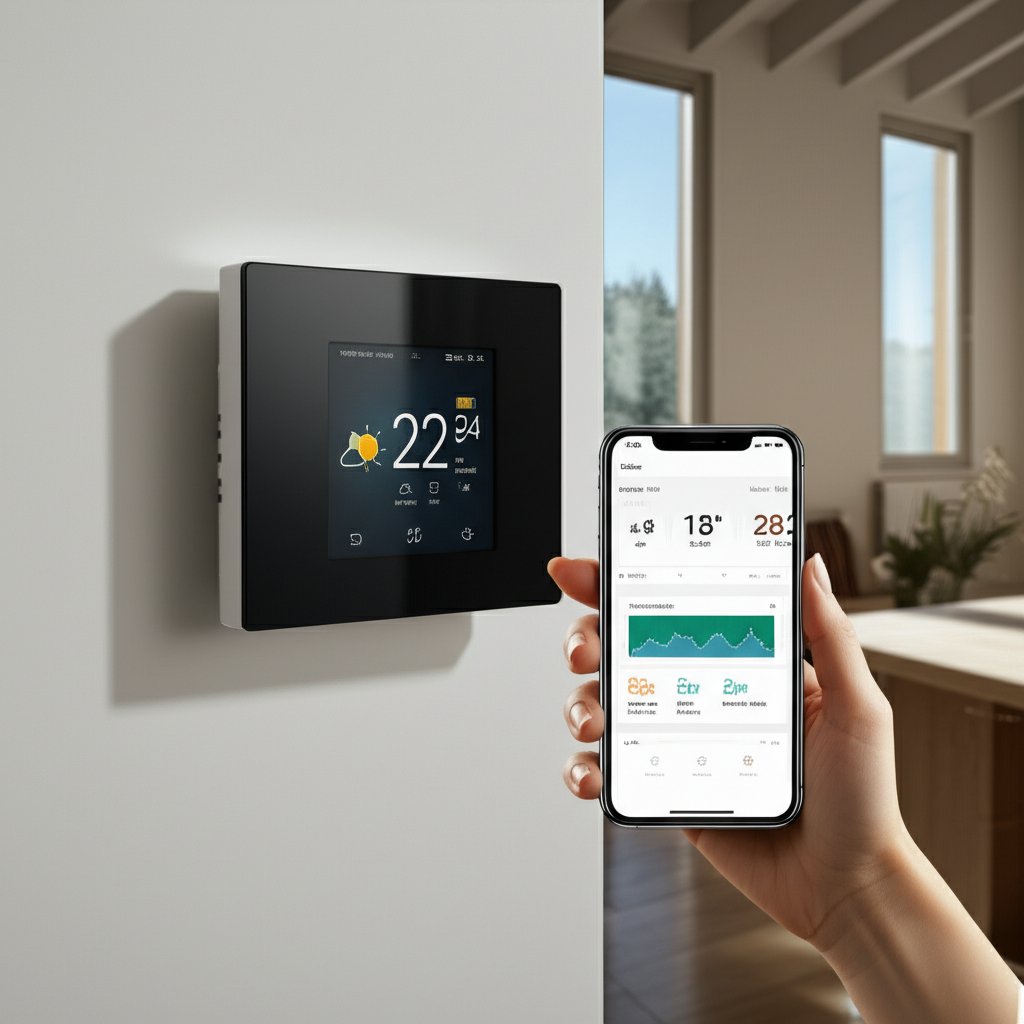Embrace Fall Comfort: Energy Savings Through Adaptive Heating
Autumn signals the start of cooler days, prompting many households to confront the tension between maintaining warmth and controlling escalating energy costs. Conventional heating relies on rigid timers or frequent manual tweaks, resulting in inefficiency and inconsistent temperatures. Adaptive heating introduces intelligent solutions that align with real-life patterns, external conditions, and personal settings, fostering a balanced environment that conserves resources.
Defining Adaptive Heating
Adaptive heating encompasses advanced climate controls that modify operations dynamically based on gathered data. These systems analyze occupancy, sleep cycles, and diurnal temperature variations rather than adhering to preset thresholds. Consequently, they prevent scenarios such as cold awakenings or stuffy returns home by preempting requirements.
Efficiency gains emerge from curtailing idle operation periods, which translates to measurable reductions in utility expenses. Homeowners report average savings of 10 to 20 percent on heating costs after implementation, depending on usage habits and system sophistication.
Rising Interest in Intelligent Heating Solutions
Homeowners increasingly adopt smart thermostats and efficient climate tools, driven by desires for reliability and financial relief. Research indicates that 68 percent of surveyed users prioritize both thermal consistency and expenditure control when selecting upgrades. Heating constitutes up to 50 percent of winter energy outlays in many regions, amplifying the appeal of targeted optimizations.
Adaptive systems refine performance by synchronizing with actual occupancy and environmental cues, minimizing excess runtime. Market projections forecast a 15 percent annual increase in installations as awareness grows through demonstrated returns on investment.
Practical Applications of Adaptive Heating
Leading devices illustrate adaptive principles effectively. Ecobee and Nest thermostats employ occupancy sensors and machine learning to develop custom profiles, factoring in moisture levels and room utilization to direct ventilation precisely.
Zoned heating partitions residences into independent sectors, activating warmth selectively in occupied zones. In expansive properties, this approach conserves resources by deprioritizing vacant areas like home offices or spare bedrooms during off-hours.
Families benefit from tailored settings, such as warmer nurseries at night while conserving energy in underused spaces, enhancing overall household dynamics.
Optimal Timing for System Upgrades in Fall
Seasonal temperature oscillations challenge standard heaters, which may overcompensate or underperform amid morning frosts and milder middays. Adaptive technologies excel here, modulating outputs fluidly to match these fluctuations.
Installing prior to peak winter demand positions households for seamless transitions and prompt efficiency gains. Early adoption during milder months allows for testing and refinement, yielding cumulative benefits as colder weather intensifies.
Enhancing Daily Routines with Adaptive Features
Adaptive heating elevates routine experiences beyond mere fiscal advantages. Envision stepping into a pre-warmed entryway upon evening arrival or finding ideal conditions in personal spaces without intervention.
Key enhancements include:
- Effortless regulation: Automated adjustments eliminate manual oversight.
- Remote oversight: Mobile interfaces enable monitoring and modifications from distant locations.
- Improved air quality: Integrated sensors track and balance humidity alongside filtration options.
- Personalized zoning: Distinct profiles accommodate varying family member preferences across rooms.
Addressing Upgrade Hesitations
Prospective adopters often worry about expense, system compatibility, or operational complexity. Contemporary designs prioritize simplicity, with many thermostats requiring less than 60 minutes for setup using basic tools.
Initial costs typically range from $150 to $300 for entry-level units, offset by rebates from utilities and projected payback within two years through reduced bills. Professional consultations ensure seamless integration with existing infrastructure.
Integrating Adaptive Heating into Broader Smart Ecosystems
Adaptive heating complements interconnected home networks, amplifying responsiveness across functions like illumination and surveillance. Coordinated setups allow triggers such as door sensors to initiate targeted warming alongside lighting activation.
Automated shades, for instance, harness solar gain on clear days to supplement mechanical heat, further curbing consumption. This holistic approach cultivates an intuitive habitat that adapts holistically to occupant needs.
Steps to Implement Adaptive Heating
Begin with a learning-enabled smart thermostat featuring remote sensing and application connectivity for straightforward entry. Evaluate compatibility with current HVAC setups and select models certified for energy efficiency.
For comprehensive enhancements, consider zoned configurations or ecosystem-compatible expansions. Consult local providers for installation support and incentive programs to streamline the process.
Adaptive heating represents a strategic evolution in residential climate management, promoting sustainability and ease. Households that integrate these tools experience sustained warmth, fiscal prudence, and refined living standards through the seasons ahead.
